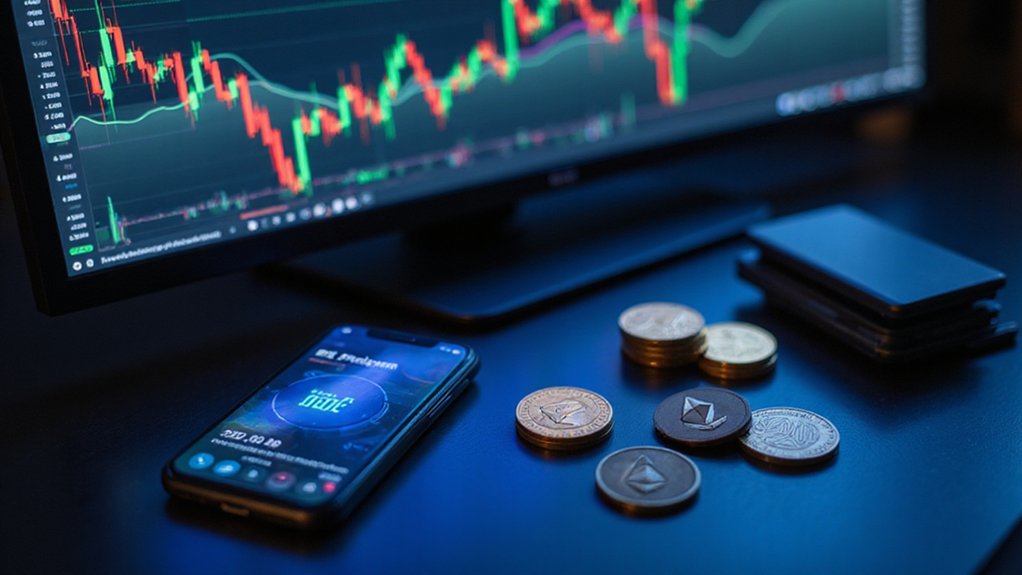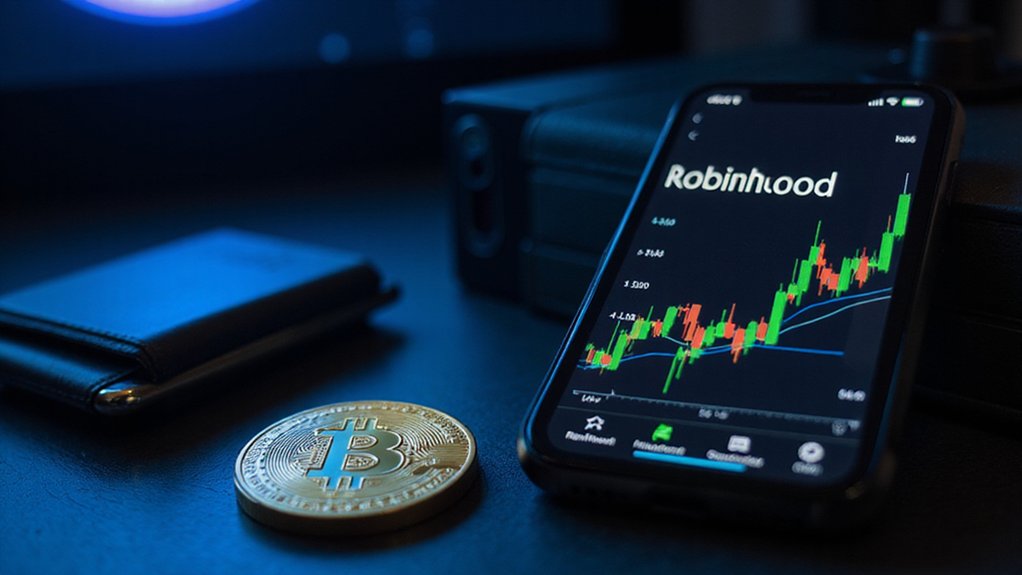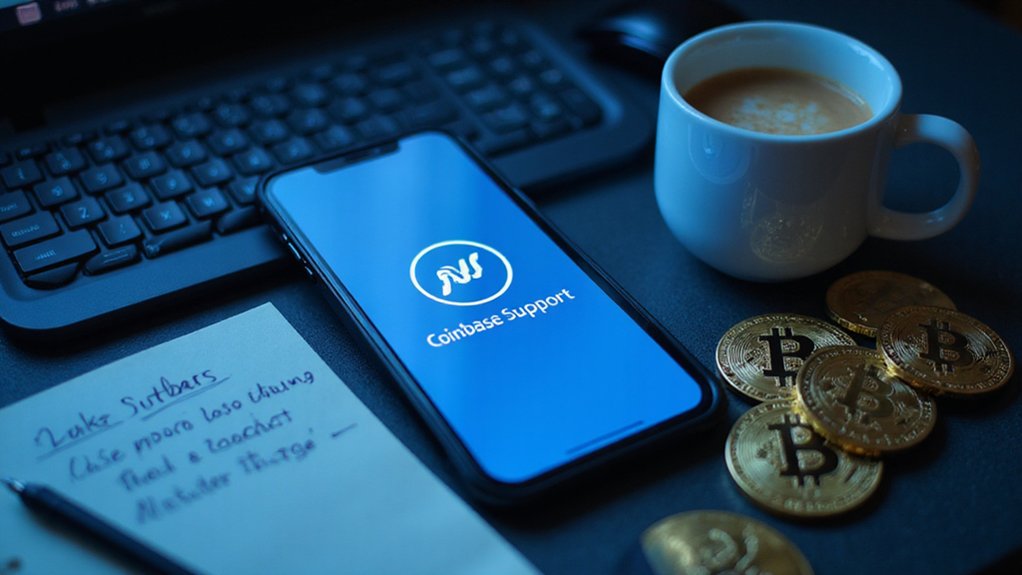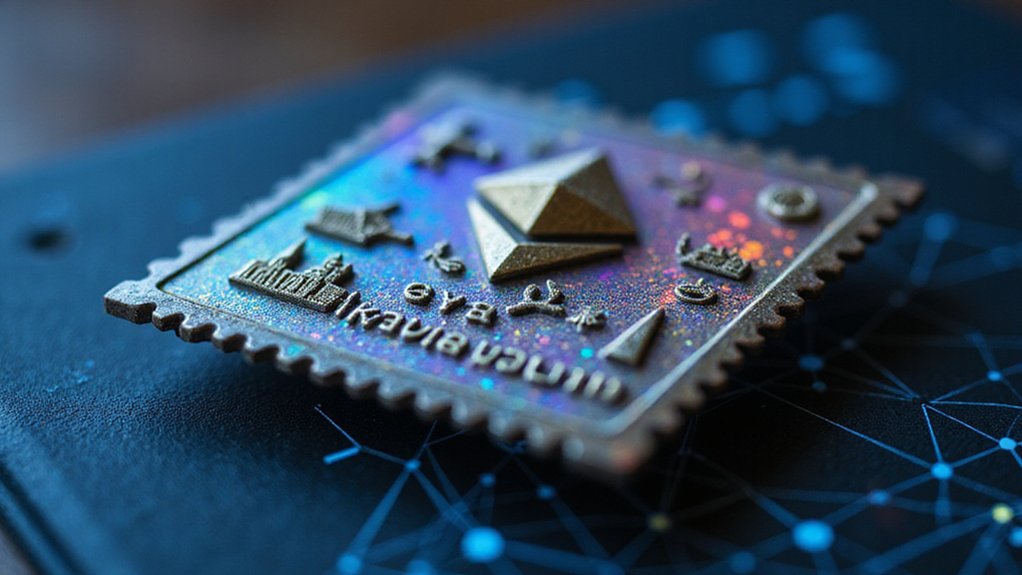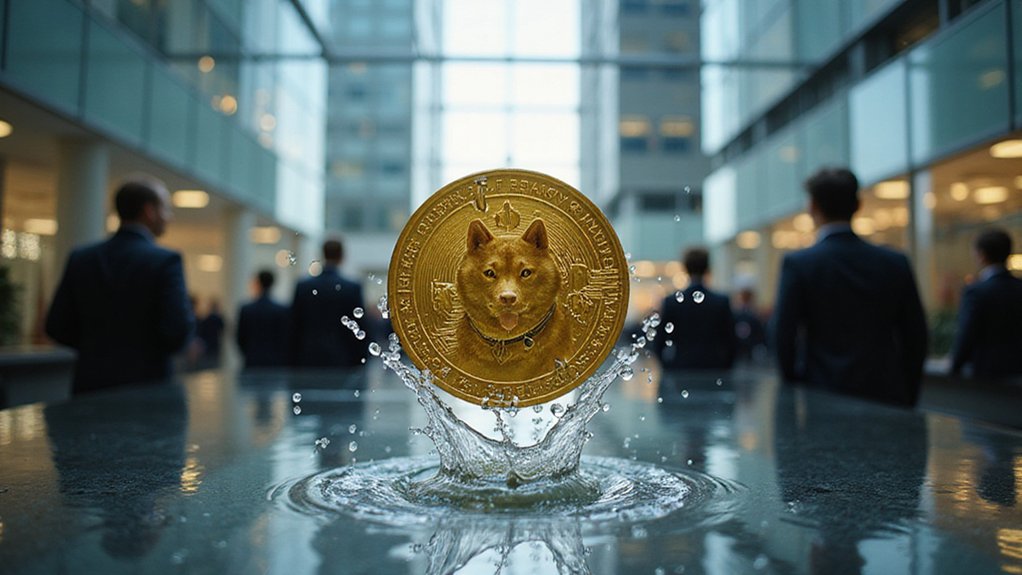Polymarket operates as a blockchain-based prediction platform where users stake cryptocurrency on real-world outcomes, basically putting their money where their mouth is. Participants buy shares (priced $0.01-$1.00) representing event probabilities using USDC via an Ethereum wallet connected to Polygon’s layer-2 scaling solution. The market’s efficiency stems from its aggregation of distributed knowledge—backed by actual financial skin in the game rather than mere opinion polling. This financial-forecasting hybrid has processed over $1 billion in annual trading volume, suggesting something rather compelling about monetized conviction.

How does a platform manage to blend the worlds of cryptocurrency, prediction markets, and real-world events into a billion-dollar financial ecosystem?
Polymarket, the Manhattan-based prediction market launched in 2020, has masterfully executed this synthesis by creating a decentralized arena where participants stake actual capital on future outcomes.
This American platform—built atop Ethereum’s blockchain and enhanced with Polygon’s layer 2 scaling technology—has redefined forecasting by introducing financial consequences to the otherwise consequence-free domain of opinion-giving.
The mechanics are elegantly straightforward: users purchase shares representing specific outcomes of real-world events, from electoral results to sporting competitions.
These shares, transacted entirely in cryptocurrency, automatically appreciate or depreciate as collective market sentiment shifts.
The system creates a fascinating arbitrage of insight, where those with superior predictive abilities can extract value from the market—a phenomenon that has driven Polymarket‘s trading volume beyond $387 million in July 2024 alone.
Unlike conventional betting platforms, Polymarket operates non-custodially, meaning user funds remain under individual control rather than platform custody.
This architectural choice, coupled with blockchain’s inherent transparency, creates a remarkably efficient market where the platform itself claims no profit from wagers placed.
The resultant ecosystem aggregates distributed knowledge with unprecedented precision, often outperforming traditional polling methods.
What distinguishes Polymarket from its predecessors is scale—having surpassed $1 billion in yearly trading volume—and accessibility.
By leveraging Polygon technology, the platform minimizes transaction costs that historically plagued Ethereum-based applications, allowing for broader participation across a diverse event spectrum.
This technological marriage delivers both security and performance without compromise.
For investors, entrepreneurs, and analysts managing uncertainty, Polymarket offers something beyond mere speculation: a quantified consensus on future probabilities, derived not from opinion polls but from actual financial commitments.
When forecasters must stake real capital on their predictions, the signal-to-noise ratio improves dramatically—rendering Polymarket not just a marketplace for speculation, but an increasingly indispensable barometer of future reality.
The platform drew intense interest during the 2024 U.S. presidential election, with a record-breaking $3.3 billion wagered on electoral outcomes.
To participate, users must connect an Ethereum wallet and deposit USDC stablecoins which can then be used to purchase outcome shares priced between $0.01 and $1.00.
Most users access Polymarket through MetaMask wallet, which provides secure management of Ethereum and its compatible tokens while enabling seamless interaction with the prediction market platform.
Frequently Asked Questions
Is Polymarket Legal in My Country?
Without knowing the specific country in question, it’s impossible to provide a definitive answer about Polymarket’s legality.
The platform faces restrictions in numerous jurisdictions—29 countries explicitly ban it, while others (Thailand, Singapore, Belgium) have recently joined the prohibition parade.
Regulatory bodies worldwide have taken action against Polymarket for operating unlicensed gambling services.
Even in countries without explicit bans, users should recognize that accessing via VPN may violate local laws and the platform’s terms of service.
How Are Disputes on Polymarket Resolved?
Disputes on Polymarket follow a multi-stage resolution process administered through UMA’s Optimistic Oracle system.
When someone challenges a proposed market resolution (posting a $750 bond), a 24-48 hour debate period ensues where participants submit evidence via Discord.
UMA token holders subsequently vote on the outcome during a 48-hour voting window.
This decentralized arbitration mechanism—complete with financial incentives and community oversight—represents prediction markets’ attempt at outsourcing truth determination to a distributed consensus mechanism.
What Fees Does Polymarket Charge?
Polymarket maintains a surprisingly straightforward fee structure: none.
The platform eschews direct trading fees, deposit charges, or withdrawal costs—a rather novel approach in the fee-laden crypto ecosystem.
Instead, revenue materializes through spreads on trading and liquidity provision, allowing the platform to monetize without explicitly dipping into users’ wallets.
Gas fees, however, remain an inescapable reality due to blockchain mechanics, and the company reserves the right to introduce trading fees in future iterations.
Can I Create My Own Markets on Polymarket?
Currently, users cannot directly create public markets on Polymarket—market creation remains centralized with the platform’s internal team.
While community input is solicited through Discord’s #market-suggestion channel and Twitter mentions, proposals must meet stringent criteria including clear resolution sources, definitive timeframes, and demonstrable trader demand.
Those keen to launch custom prediction markets might consider joining the waitlist for forthcoming user-generation tools or exploring third-party development alternatives that offer administrative controls.
How Does Polymarket Prevent Market Manipulation?
Polymarket deploys several safeguards against market manipulation, though their efficacy remains debatable.
The platform’s resolution process requires USDC.e bonds for outcome proposals, while the Markets Integrity Committee verifies data and guarantees proper payouts.
Clear market rules reduce ambiguity, and public transparency theoretically deters manipulative behavior.
However, the system isn’t foolproof—allegations of whale influence, technical vulnerabilities in dispute mechanisms, and limited regulatory oversight continue to challenge the platform’s market integrity claims.
